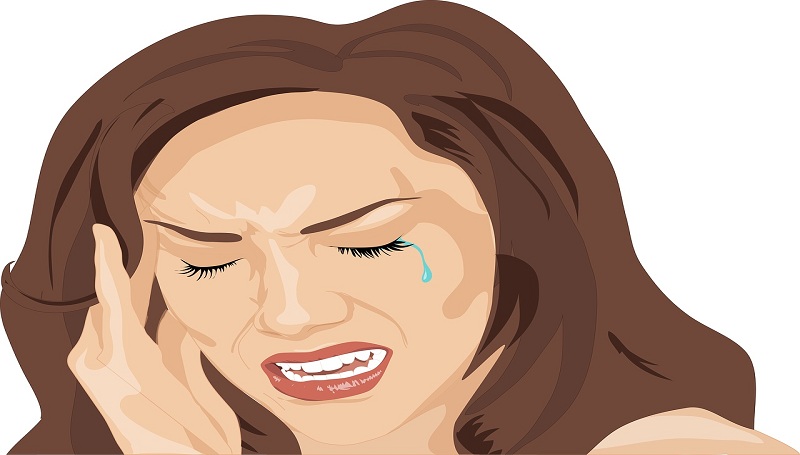How To Treat Attention Deficit Disorder With Neurofeedback
Each year there are more and more attention deficit disorder (ADD) and attention deficit hyperactivity disorder (ADHD) patients who are looking for alternative treatment options, having given up on the various medications available to treat the symptoms of these problems.
That is because these medications are known to often stop or never working, as well as, cause a number of difficult side effects that these patients and their families are looking to avoid. And that is why more and more patients with this diagnosis, turn to the helpful effects of neurofeedback.
Have you ever heard about neurofeedback? Has your doctor perhaps recommended this treatment option to you? In today’s article, we will explain shortly what you need to know about ADD/ADHD.
What is Attention Deficit Disorder (ADD)?
Attention deficit disorder (ADD) is the term that is being used to describe one of the most common childhood diagnosis in which the child is experiencing problems to keep its focus on a current task. ADD most commonly causes its patients problems with their school work, social life and even everyday activities like getting dressed and brushing their teeth.
A child with ADD seems as if it’s living in its own little world, shy and keeping under the radar. On the other hand, you might have heard about attention deficit hyperactivity disorder (ADHD) which is basically the same as ADD. However, a child with ADHD will never keep under the radar – instead it will be noticeable due to its bursts of energy and the inability to stay in one place for too long.
Most commonly, a pharmaceutical is being prescribed to control their mood, focus and able them to enjoy a more of a normal life.
What is Neurofeedback?
Neurofeedback, also known as EEG neurofeedback, is being used direct training of the brain in order for the brain to function more efficiently. Neurofeedback mainly addresses problems regarding brain dysregulation. It is not uncommon for doctors to recommend neurofeedback to their patients to treat their problems with anxiety, sleep problems, behavior disorders and so on.
And that brings us to the point where neurofeedback is being used to treat the signs and symptoms of ADHD/ADD. The way that it functions is quite simple. The patient’s brain activity is being tracked using electrodes and showed to them on a computer. Then it is required of them to try and change their activity levels towards improving them.
Can neurofeedback be used in the treatment of attention deficit disorder?
The goal in the process of using neurofeedback for ADD/ADHD is to teach the patient to produce more brain wave patterns that are being associated with focus since the focus is the thing that these patients are lacking as we mentioned before. Some authors approve neurofeedback being used in the treatment of ADD/ADHD and some do not.
What should be taken into consideration is the number of satisfied patients and their families after neurofeedback has been used. A lot of these patients turn to neurofeedback after they have had a number of disappointing experiences trying various medications. It would take a couple of weeks even a couple of months before the beneficial effects of neurofeedback start showing up.
This means that it requires a lot of time, effort and patience from the patient but from the family as well. A study published in the Applied Psychophysiology and Biofeedback compared the effects of neurofeedback and methylphenidate, a commonly used central nervous system stimulant, among 34 children, aged 8-12 years old.
They were divided into two groups – a group of 22 children on which the effects of neurofeedback have been used and a group of 12 children on which the effects of the methylphenidate have been tested, according to the parent’s preferences. It took 3 months for the study to be completed and after it, the results showed that there was a success in both groups in the form of symptoms decline and increased focus.
This study showed that neurofeedback has truly the beneficial effects required to improve one’s condition and that is a great step forward especially for those patients and their families who are not looking into using any pharmaceuticals to treat the symptoms. And this is only one of the many studies available to read on this exact topic.
Most of these studies confirm the beneficial effects of neurofeedback. Reading up on all the available research, we come to the conclusion that neurofeedback should be included in the treatment plan for any ADD and ADHD patient because of the beneficial effects that are being promised.
However, no patient should be leaning only on neurofeedback. Neurofeedback should take the form of a supporting treatment option while other treatments are being applied as well.
Conclusion
Neurofeedback, commonly used to treat sleep problems, anxiety and behavior disorders, is a method that allows you to train your brain towards improving a certain problem area. Contrary to what people might think, neurofeedback can be also used to treat the signs and symptoms of attention deficit disorder and attention deficit and so it has been used to which a number of satisfied patients have to serve as a living proof.
What is making these children and adults experience difficulties in their everyday lives, now all of that it can be improved with the help of neurofeedback. With this brain training, these patients are able to improve their ability to focus, engage in everyday activities and live a more normal life despite their diagnosis. The question is – are you willing to give it a try?
Remember, time, motivation and patience are strongly required in the case of neurofeedback being used to treat the symptoms of ADD and ADHD. But your efforts will not be for anything – you get to experience the beneficial effects and live a better life – all of that with the help of neurofeedback.
References:
https://www.consumerhealthdigest.com/brain-health/feelings-person-with-adhd-knows.html
http://qfnu.net/5-ways-to-deal-with-adhd.php
Author Bio:
Sophie Addison is a popular blogger and skincare expert. She is very passionate about writing about skincare and beauty. She has posted articles on how to get rid of acne, joint pain treatment, weight loss and menopause hot flashes. In recent years, she had the opportunity to research on Provasil. Apart from work she likes gardening and listening to music. You can also contact her on Facebook, Twitter and Pinterest.




